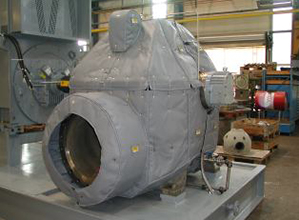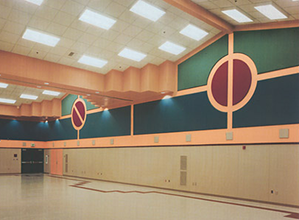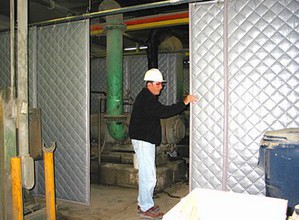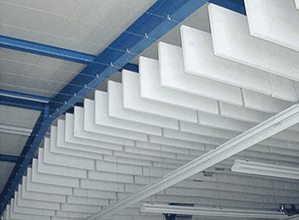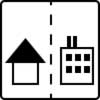Understanding Sound Absorbing Materials and Echo
This is one of the most common noise problems we see in today’s world. You have a space, such as a gym, multipurpose room, fellowship hall, cafeteria, worship space, or meeting hall, and it gets too loud when you have people in it. Echo, unintelligible speech, and music sounding poorly are some of the complaints associated with this room condition. The primary problem with the room is that there are a lot of hard, noise reflective surfaces. The sound bounces off of the walls and ceilings to cause the aforementioned problems. The simple answer to solve this problem is to add sound absorbing panels to the space.
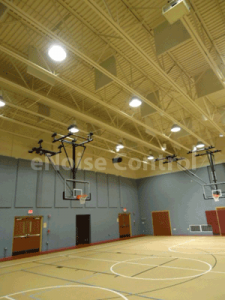 The Room
The Room
The room is constructed of building materials. For example, a wooden floor, painted concrete block walls, and corrugated metal deck ceiling on open bar joists. Another example is a vinyl tile floor with gypsum board walls and ceiling. All of these construction products absorb some sound, and some products absorb more than others.
The amount of sound a material absorbs, or does not reflect back, is measured in a lab and is called a Noise Reduction Coefficient (NRC). Each construction material or assembly has an NRC value showing how that material performs in absorbing sound. Materials like thick carpet, plush curtains, seat cushions, and even people have a fairly high NRC value. Materials such as glass, painted concrete, and metal decking have very low NRC values and subsequently reflect a lot of sound. There are tables published with pages of listings of NRC values for common materials.
Now you have a room and it is constructed with materials that have published NRC values. We can calculate the reverberation time for your room in its current condition using Sabin’s formula. To get this information, we use the square footage of each material covering the walls, floor, and ceiling and the NRC value of each material. We define reverberation time by determining how many seconds it takes for the sound in the space to decrease by 60 dBA when the sound source is shut off. Different room uses require different reverberation times. Performance spaces may want a high reverberation time while a conference room would require a very low reverberation time.
The Solution
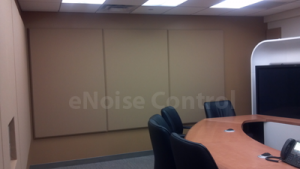 We can create hypothetical scenarios using different amounts of acoustical absorption in the room with this formula. This allows us to determine the correct amount of acoustical absorption to add to the space to achieve the desired reverberation time for the use of the space.
We can create hypothetical scenarios using different amounts of acoustical absorption in the room with this formula. This allows us to determine the correct amount of acoustical absorption to add to the space to achieve the desired reverberation time for the use of the space.
Using this valuable information, you can look at the variety of acoustical absorption materials available. There are several factor to consider when selecting absorption.
- How is the material installed?
- What is the cost of the material?
- What is the architectural look of the material?
- How will it look in my space?
Common materials include acoustic baffles, acoustic banners, and fabric wrapped wall panels. These materials also provide opportunities to reinforce the color scheme for your organization or you can opt for neutral colors that blend in with the existing wall and ceiling.
eNoise Control has years of experience helping clients reduce the reverberation time in their space. Call us today to discuss the options for your noise control project.
